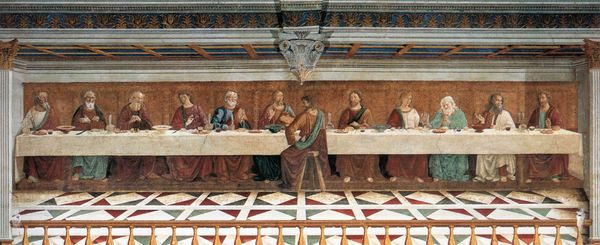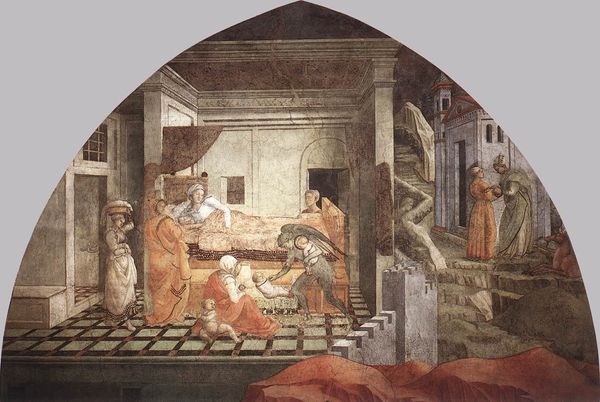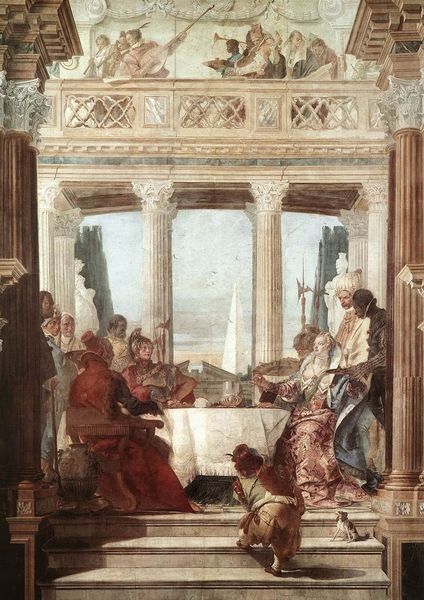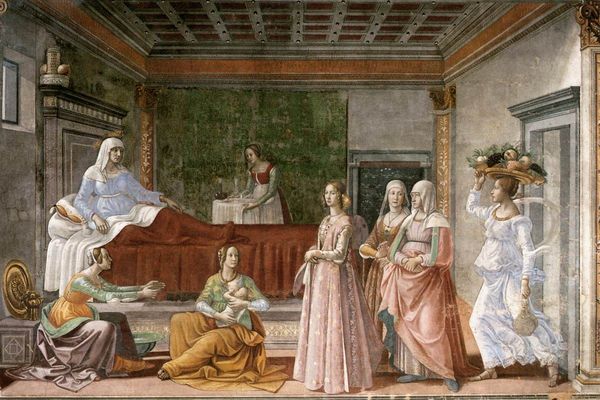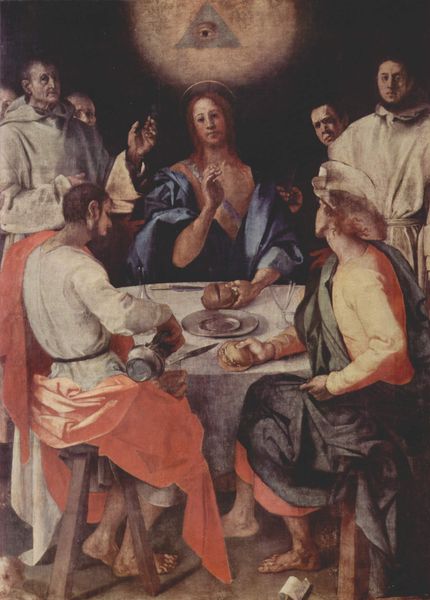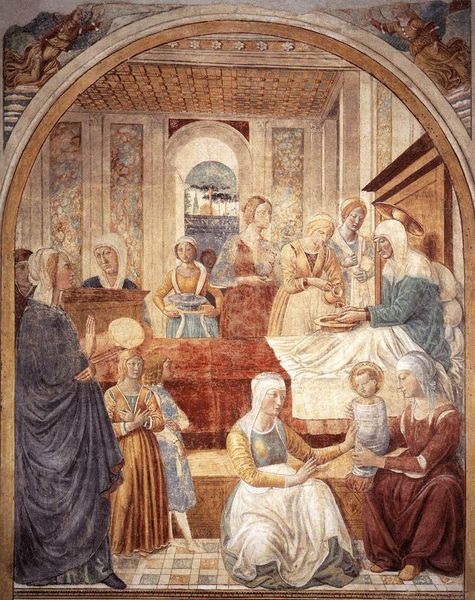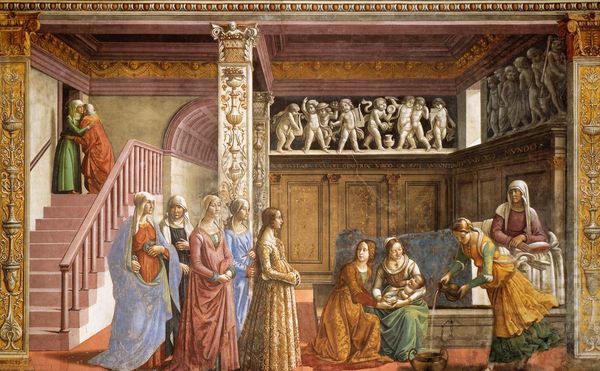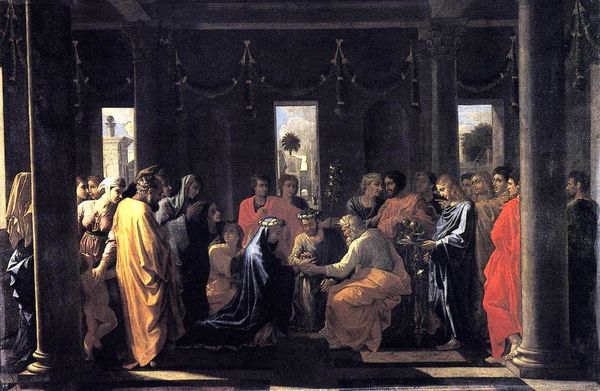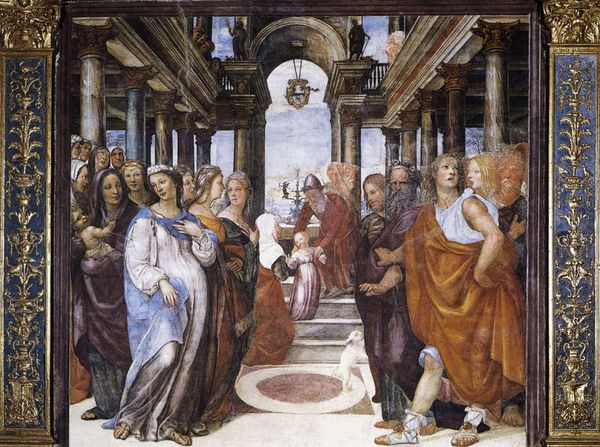
painting, oil-paint, fresco
#
portrait
#
narrative-art
#
painting
#
oil-paint
#
sculpture
#
figuration
#
fresco
#
11_renaissance
#
oil painting
#
christianity
#
genre-painting
#
history-painting
#
italian-renaissance
Copyright: Public domain
Filippo Lippi painted this fresco, The Feast of Herod: Salome's Dance, using pigments applied to fresh plaster. Here, the artist employs the fresco technique to illustrate a biblical narrative, a popular subject that provided artists with a chance to display their mastery of perspective and storytelling, and an opportunity to use expensive materials. The pigments are ground from minerals and plants and mixed with water. The skill lies in applying these washes quickly and accurately, while the plaster remains wet. The painting becomes part of the wall, and the artist’s hand is recorded in the brushwork and the subtle variations in color and texture. The use of fresco in the 15th century was a labor-intensive process, requiring skilled artisans and careful planning. Patrons who commissioned frescoes demonstrated their wealth and status by investing in these grand and enduring works of art. Looking closely at the painting reminds us of the physical and social context in which it was created, and encourages us to question our assumptions about the categories of fine art and craft.
Comments
No comments
Be the first to comment and join the conversation on the ultimate creative platform.
